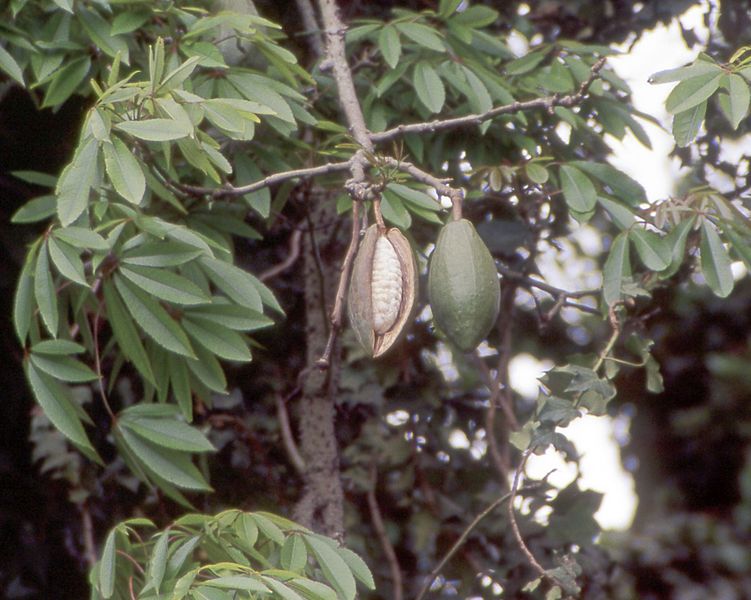Ceiba pentandra or the Silk Cotton tree is tree belonging to tropical areas. It can reach a height of about 150 feet or even more.
6. A huge kapok tree, approximately 300-year-old, on the island of Antigua, has a large hollow area at the base of its trunk that can hold around 20 people at a time. It has become a spot of tourist attraction.
1. It is a tree considered sacred by indigenous people of America.
2. It is one of the tallest trees in a rainforest vegetation.
3. The diameter of the trunk of the tree can measure upto 9 feet.
4. In many places the straight trunks of the kapok tree are used to make dugout canoes.
5. According to Taino myth, the tree would talk to the woodsmen and tell them if it was all right to cut it down. The tree spirit would also specify how it would like to be carved and painted. Those who were involved in chopping down these trees would then have a life-long responsibility to care for the transformed spirits and to make offerings to them.
 |
| Kapok tree-pod |
7. The kapok tree is deciduous, shedding all of its leaves during the dry season.
8. The white and pink flowers of the kapok tree emit a foul odor that attracts bats.
9. On the dark side, a Mayan legend warns of the evil Xtabay woman who hides in the buttresses at night and emerges to seduce and kill young men who are bewitched by her beauty.
10. The young kapok trees cannot be climbed by monkeys as they develop conical spines about an inch long.
11. The seeds, leaves, bark and resin have been used to treat dysentery, fever, asthma, and kidney disease.
12. Kapok oil has some potential as a biofuel and in paint preparation.
13. According to the folklore of Trinidad and Tobago, the Castle of the Devil is a huge kapok growing deep in the forest in which Bazil the demon of death was imprisoned by a carpenter. The carpenter tricked the devil into entering the tree in which he carved seven rooms, one above the other, into the trunk. Folklore claims that Bazil still resides in that tree.

No comments:
Post a Comment